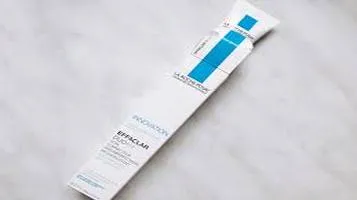The Versatile World of Sponges
Sponges are simple, multicellular marine animals belonging to the phylum Porifera. They are primarily found in ocean habitats, although some species inhabit freshwater environments. Sponges possess a porous body structure, which allows water to circulate through them, enabling the filtration of nutrients and oxygen. Unlike most animals, sponges lack true tissues and organs, relying instead on specialized cells for various functions. Their skeletons are composed of spicules made from silica or calcium carbonate, or a fibrous protein called spongin. Sponges exhibit remarkable regenerative abilities, enabling them to recover from injuries and even reassemble from disassociated cells. They play vital ecological roles by maintaining water quality and serving as habitats for various marine organisms, while also contributing to biomedical research due to their unique chemical compounds.

Sponges, both as natural ocean inhabitants and synthetic household tools, are often overlooked despite their remarkable versatility and indispensability. This review delves into the multifaceted nature of sponges, exploring their biological significance, ecological impact, and everyday utility.
Natural Sponges: Marvels of Marine Life
Natural sponges belong to the phylum Porifera, a group of simple, multicellular organisms that have existed for over 600 million years. Found predominantly in marine environments, though some reside in freshwater, these fascinating creatures play crucial roles in their ecosystems.
Biologically, sponges are filter feeders, drawing water through their porous bodies to extract nutrients and oxygen while expelling waste. This process not only sustains the sponges but also contributes to water clarity and quality, benefiting other marine life. The structural simplicity of sponges belies their ecological complexity; they provide habitat and protection for a myriad of marine organisms, from small invertebrates to fish.
Moreover, the biochemical properties of sponges have garnered significant scientific interest. They produce a variety of compounds with potential pharmaceutical applications, including anti-inflammatory, antibacterial, and anticancer agents. This aspect underscores the importance of conserving sponge habitats, as the loss of these organisms could mean the loss of untapped medical breakthroughs.
Synthetic Sponges: Household Heroes
In the realm of everyday life, synthetic sponges are ubiquitous, found in kitchens, bathrooms, and garages around the world. These sponges, typically made from materials such as cellulose, polyurethane, or polyester, are prized for their absorbency, durability, and versatility.
Absorbency and Cleaning Power
One of the primary virtues of synthetic sponges is their exceptional absorbency. They can soak up substantial amounts of liquid, making them ideal for cleaning up spills, washing dishes, and scrubbing surfaces. The porous structure of sponges allows them to trap dirt and grime effectively, while their flexibility aids in reaching nooks and crannies that other cleaning tools might miss.
Durability and Versatility
Synthetic sponges are also remarkably durable. High-quality sponges can withstand repeated use and rigorous cleaning tasks without falling apart. They come in various shapes, sizes, and textures, catering to a wide range of cleaning needs. For instance, some sponges feature a soft, absorbent side for gentle cleaning and a rough, abrasive side for tackling stubborn stains and grime.
Environmental Considerations
Despite their utility, synthetic sponges pose environmental challenges. Many are made from non-biodegradable materials, contributing to landfill waste. Additionally, some sponges release microplastics into water systems, affecting marine life and ecosystems. As awareness of these issues grows, there is a push towards more sustainable alternatives.
Sustainable Alternatives
Eco-conscious consumers are increasingly turning to biodegradable and compostable sponges made from natural materials like cellulose, hemp, and loofah. These options provide the same cleaning efficacy without the environmental footprint. Companies are also innovating with reusable silicone sponges and scrubbers that offer longevity and reduced waste.
Comparative Analysis: Natural vs. Synthetic
When comparing natural and synthetic sponges, it is essential to consider the context of use and environmental impact. Natural sponges, harvested sustainably, offer a biodegradable option with a low environmental footprint. They are particularly favored for bathing and skincare due to their gentle texture and hypoallergenic properties.
However, the harvesting of natural sponges must be managed carefully to prevent overexploitation and habitat destruction. Synthetic sponges, while less environmentally friendly, provide a cost-effective and versatile option for a wide range of cleaning tasks.
Conclusion
In conclusion, sponges, whether natural or synthetic, are indispensable tools that offer remarkable benefits in both ecological and practical contexts. Natural sponges play a vital role in marine ecosystems, contributing to water quality and providing habitat for marine life, while their biochemical properties hold promise for medical research.
Synthetic sponges, on the other hand, are everyday heroes in households worldwide, prized for their absorbency, durability, and versatility. However, their environmental impact cannot be ignored, prompting a shift towards more sustainable alternatives.
As consumers, understanding the origins, uses, and environmental implications of the sponges we choose can help us make informed decisions that balance utility with sustainability. Whether opting for natural or synthetic, prioritizing eco-friendly options and responsible usage can ensure that sponges continue to serve us effectively without compromising the health of our planet.






